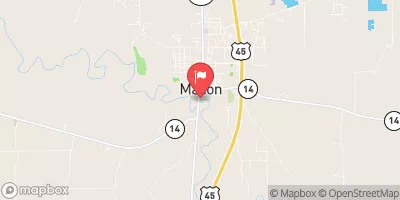Summary
The lake is home to a variety of fish species, including largemouth bass, bluegill, crappie, northern pike, and walleye. Largemouth bass is one of the most prevalent fish species in Choctaw Lake, making it a perfect spot for bass fishing enthusiasts.
Apart from fishing, there are several nearby activities that visitors can enjoy, such as hiking, picnicking, and camping. The lake is surrounded by scenic nature trails, making it a perfect spot for those who love to explore nature.
When it comes to fishing tips, anglers are advised to use soft plastic lures when targeting largemouth bass. For crappie, using live minnows or jigs can be effective. Anglers should also pay attention to underwater structures such as weed beds, rock piles, and drop-offs.
The best time of year to visit Choctaw Lake for fishing is during the summer months, from June to August. During this time, the average temperature is around 75°F to 80°F, making it perfect for outdoor activities.
Overall, Choctaw Lake is a great fishing spot that offers a variety of fish species and nearby activities. With its beautiful scenery and ample fishing opportunities, it's no wonder why it's a popular destination for anglers in Wisconsin.
Weather Forecast
Nearby Streamflow Levels
 Yockanookany River Nr Kosciusko
Yockanookany River Nr Kosciusko
|
25cfs |
 Pearl River At Burnside
Pearl River At Burnside
|
1070cfs |
 Catalpa Creek At Mayhew
Catalpa Creek At Mayhew
|
2940cfs |
 Pearl River At Edinburg
Pearl River At Edinburg
|
91cfs |
 Noxubee River At Macon
Noxubee River At Macon
|
84cfs |
 Big Black River At West
Big Black River At West
|
93cfs |
Angling Safety Guidelines
Check local fishing rules, seasons, size limits, and license requirements to ensure legal and sustainable angling.
Handle Fish Responsibly
Use wet hands, minimize air exposure, and release fish gently to improve survival rates when practicing catch-and-release.
Choose the Right Gear
Match your rod, line, and tackle to the species and conditions to increase success and reduce unnecessary harm to fish.
Respect the Waterway
Avoid disturbing habitat, prevent bank erosion, and keep a safe distance from spawning areas to protect ecosystems.
Keep It Clean
Pack out all line, hooks, bait containers, and trash—discarded gear can injure wildlife and degrade waterways.

 Cabin Lake
Cabin Lake